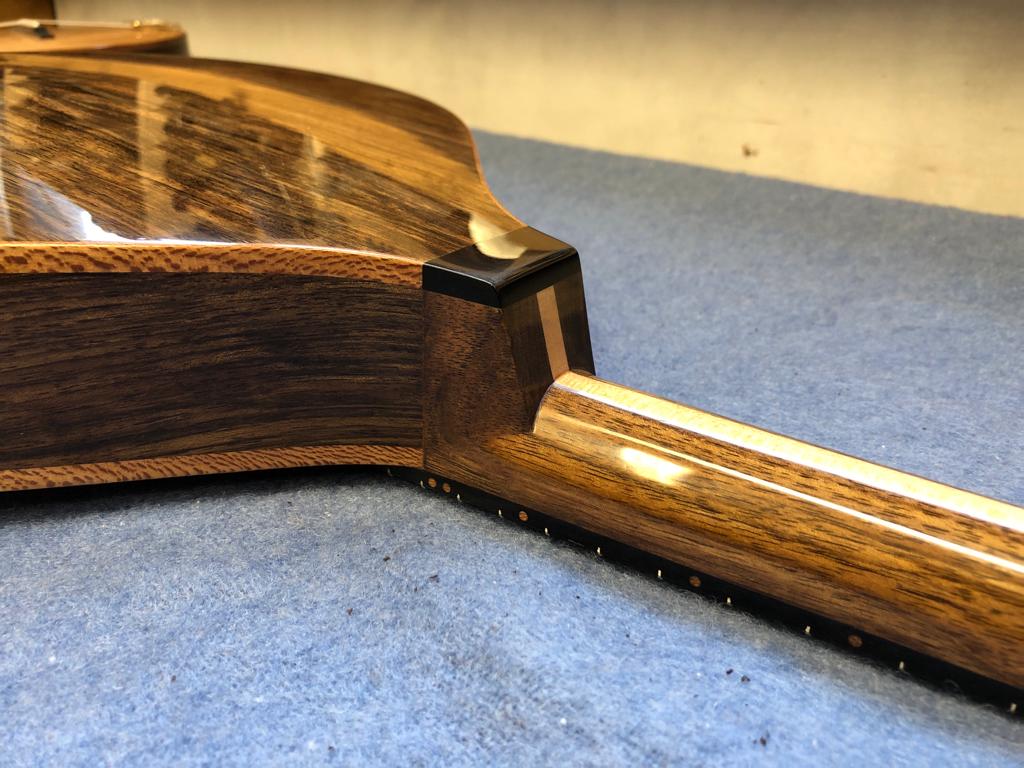
Hello! thanks for visiting!
see what we are up to on Instagram
@farmiloeinstruments
Contact us for any instrument repairs or making
(price list at bottom of page)
farmiloeinstruments@gmail.com
Telephone 07929 892077
Our workshop is in Woodford, Northamptonshire
Our instruments
Dola
Developed in 1996 and modified in 2022. This hard tail guitar features; custom hand wound stacked pickups, solid brass and stainless-steel bridge assembly and custom nickel silver jack plate. All parts except machine heads, strings and electrical controls (pots/switches) were hand made.





Gatekeeper Mandolin










Ordering
If you are looking to place an order for an instrument please contact us and discuss which model you are interested in, also if you have any custom specifications to make the instrument truly one of a kind.
To order from us please contact us via email at: farmiloeinstruments@gmail.com
Warranty
We warranty the workmanship, the parts we make on our instruments and the materials we use in its
construction for a period of 2 years to the original purchaser, excluding normal wear and tear to
finishes, frets and electronic control components. Other parts supplied to us usually carry a 12
month warranty.
IPO Design Registrations
6195339 (guitar saddle)
6195344 (stringed instrument headstock)
6195342 (stringed instrument tailpiece)
6195340 (guitar headstock)
In addition to copyright, some features of Farmiloe instruments; as
above, are currently registered and certified designs.
We have spent time and effort in creating these unique features valuable to
Farmiloe instruments
and we give no authority for any of our registered designs to be utilised or copied by others.
Repair Work
We welcome any enquiry, please feel free to contact us to discuss your repair or custom work.
Below is our guide price list for routine repairs.
Notes:
• Please bear in mind repair prices listed are conditional to our prior assessment of instrument
• we have a minimum bench charge of £45, covering one hour of labour
• Unlisted repairs are based on £45 per hour labour charge
• All prices below are subject to adding the cost of any materials, parts, or strings required
• This is a guide list – prices may change if we encounter unforeseen extra work – we will advise on this
Restring and minor action adjustments
£45 per hour (1hr minimum charge) plus string/parts
Full set up – in depth set up including checking fret seating, full fret dress, restring, action (via truss rod and nut/bridge adjustments) and intonation
• 4 or 6 string electric/acoustic instruments – £98
• 6 string locking trem electric guitars – £118
• 12 string electric/acoustic instruments – £118
Refrets – 18% nickel silver wire, please bear in mind the nut may also need replacing if the slots are found to be cut too low (prices based on up to 22 frets)
We do not re-lacquer maple boards
• Unbound board – £210 / £252*
• With binding – £230 / £276*
*20% uplift for stainless steel
Electronics – costed out at £45 per hour
Nut replacement – (plus cost of blank)
• Narrow type – £48
• Large type – £65
• Gibson (lacquer work may be required) £80
• Large 12 string nut – £95
Bridge saddle replacement (acoustic)
£48 plus cost of blank (one piece bone saddle)